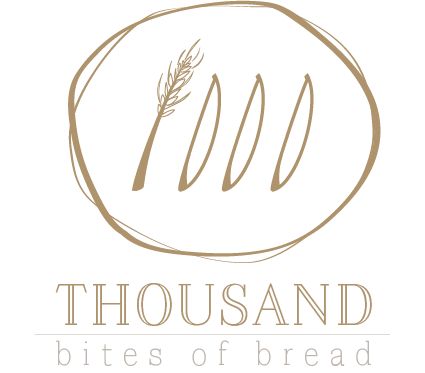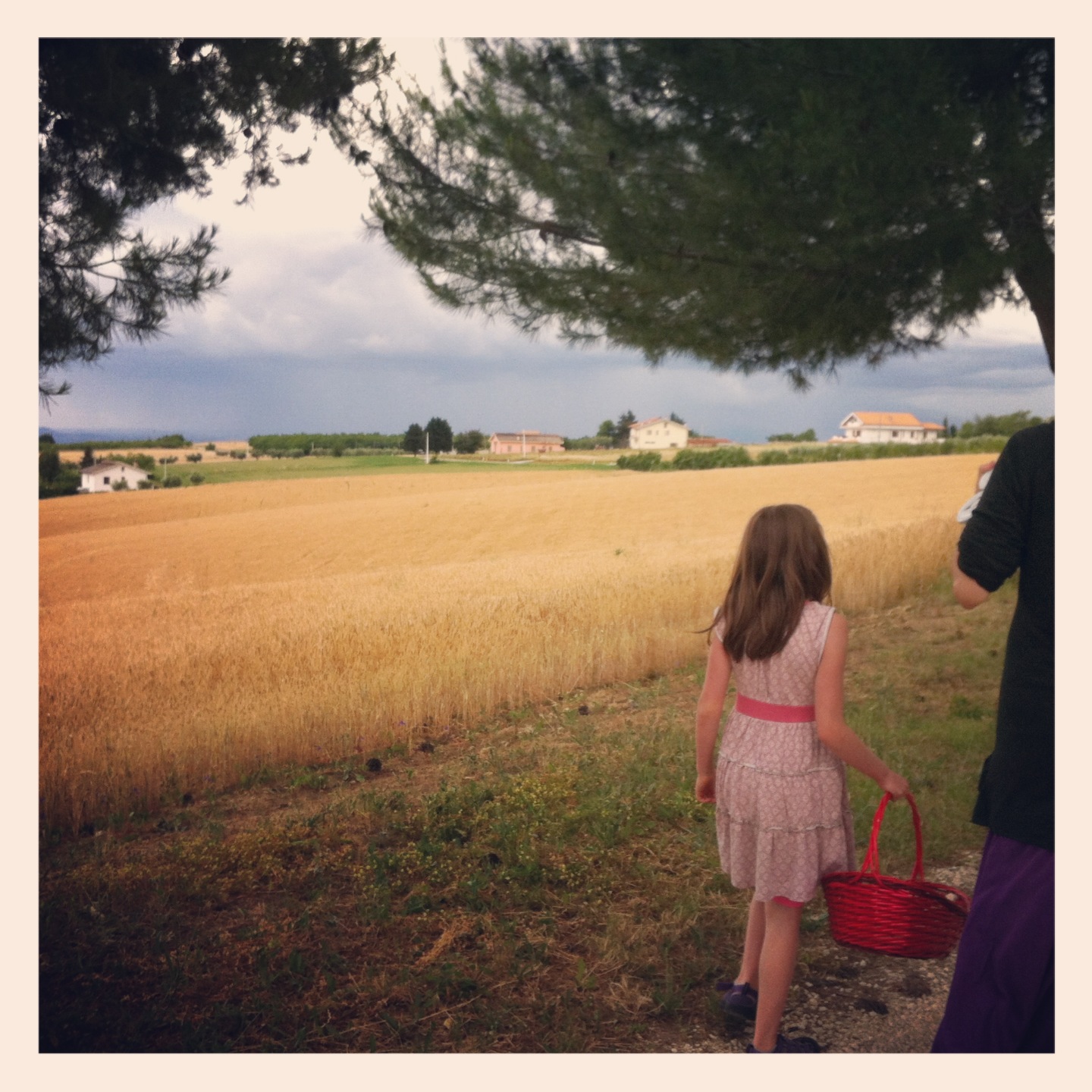Understanding new visions of FARMING grain
There was a time when I didn’t think much about flour. Sure, it was one of those pervasive ingredients that appeared regularly, but beyond lifting it off the grocery store shelves, I didn’t ponder this silky white powder. I just measured it out and that was that. It was a backbone, but mostly I just saw it as a blank slate. It always seemed so inert in and of itself, kind of like a drab little wallflower that had some prospect for pizazz if you knew how to nudge her the right way.
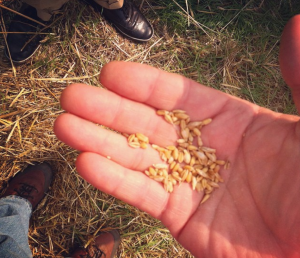
Oh, my friends, how wrong I was! Flour generally comes from seeds and seeds are the sexiest things we’ve got—or, they can be. Think about it. Grab a handful and you’re holding what made whole civilizations possible. The ancients must have marveled over their potential. Choose to scatter these plump little nuggets over a field and they sprout into a cycle of life. But you could also do something else, they figured out. You could eat the seed, and this quelled their appetite for quite a long while. Then, oh then! They got another idea—crush the seeds! Eating a seed is a primitive act of hunger versus satiety, but crushing the seeds, this unlocks new abilities and creates a whole new food system that we had to feel our way through. Crushing seeds, also known as milling them—did something else, too. It provided a crossroads where we started to depend on each other for specialization. And here’s the thing: Depending on each other requires a community and community leads to culture. No longer are we hungry primates wandering through the wilds grabbing at seeds when we can get them. Now we are farmers, now we are millers, and now we are bakers. We must work together to make this cycle possible.
This is still the case, my baker friends. We still need to work together. It’s actually imperative that we work together. Wheat and other grains still take up the largest proportion of space on our plates so we can have an impact on how the world eats in every choice we make related to our baking.
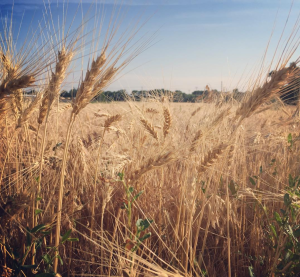
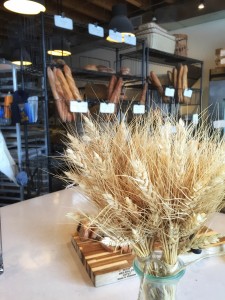
Bakers, let’s all take a stand together! Many of us are already on-board for local and organic produce and meats. Let’s take this thinking into the most prevalent part of our food supply. Let’s commit to seeds—and thus, flours—that nourish and sustain rather than deplete and weaken. Where would you rather your food cycle start?
Here’s what you can do:

-Buy from farmers who pay attention to the seed they start with. Advocate for seeds that come from sustainable systems and ones that were bred for healthier life cycles. Seeds that come to us for flavor and nourishment are a good start. Ones that are bred to work with the needs of the farmer are another point to investigate. Look for wheat varieties that are heritage grains or ones that have been nurtured in a progressive breeding program that studies diversity. Talk to your farmers and ask them a few questions about the varieties they sell and why. They’ll be your best educators. If you are buying flour, talk to the miller and ask them why they chose the wheat variety that they did. Have they had a conversation with the farmer? Better yet, do they have an ongoing relationship with the farmer? This closes the loop and lets the miller give feedback and vice versa. See, community. Most of these flours have robust flavor profiles, so it’s a whole new palate to work with. If you’ve already checked your local markets and you need a list of places to start, try my resource list.
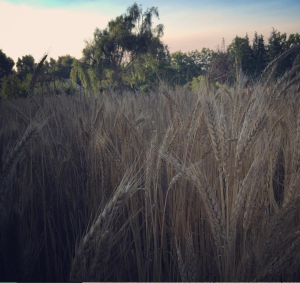
-Buy from farmers who pay attention to the soil. There is ever more research coming out about the symbiosis of plants and soil. It turns out that roots don’t just greedily suck up nutrients from dirt. They are actually in conversation, with roots continually communicating with the citizenry of the soil. A plant might be infested with a certain bug, let’s say. Their roots—in a healthy, vigorous soil—might then send a message down to the populations below. What would happen next is like world unity—the populace of soil organisms could then summon the guards and help the plant make chemicals to ward off the bugs. Cool, huh?
This, coincidentally, is also what happens in your gut if you have hardy and fit immune function. You are a walking ecosystem, my friends. Take care of the littlest creatures residing in the deepest, darkest places on our planet. How to take care of them? For one, feed them whole grains. To come full circle here, there are compounds in the bran layer of most grains that you can’t break down, but guess who can? Your friendly neighborhood gut flora.
You’re walking around thinking you’re just you, but you’re not. You’re a symbiotic process of uptake, metabolizing and becoming. You’re not just feeding you, you’re feeding a whole world that you happen to contain. In the same way that you’re living and functioning upon a planet, microbes are living and functioning inside of you. Take a moment to appreciate the walking ecosystem that is YOU.
-Buy grain from people who pay attention to sunlight. I’m being a little wry here. Of course your farmer is paying attention to sunlight, but what I’m getting at is something that was a game changer for me. Farmer Kelly Mulville of Paicines Ranch pointed out in a recent symposium that most farming systems are based on engineering. We need, he implored, to set new farming systems that are based on design instead. We need a new host of farmers who are creative enough to think about designing new ways of harvesting sunlight. Which farmers are doing this? Mostly the ones who are paying attention to soil and seed.
Three markers of good farming practices
- Less tilling, or if possible, no tilling. Disturbing soils also disturbs microbiota.
- Integration of cover crops.
- Diversity.
I encourage you to get to know a farmer. Also, why not try some new grains and flours this week? Go ahead, commune with a handful of seeds that inspire you. If you need a place to start, here’s my resource page. I update it regularly, and I’ve baked with most of these, so I’m happy to answer any questions that might arise. Don’t hesitate to reach out. At any rate, let me know how it goes.
I’m off to teach a class in Olympia, Washington today. Can’t wait for a new group of bakers to join the fold. Savor your week, friends, with all the delight and gratitude you can muster.
All my best,

